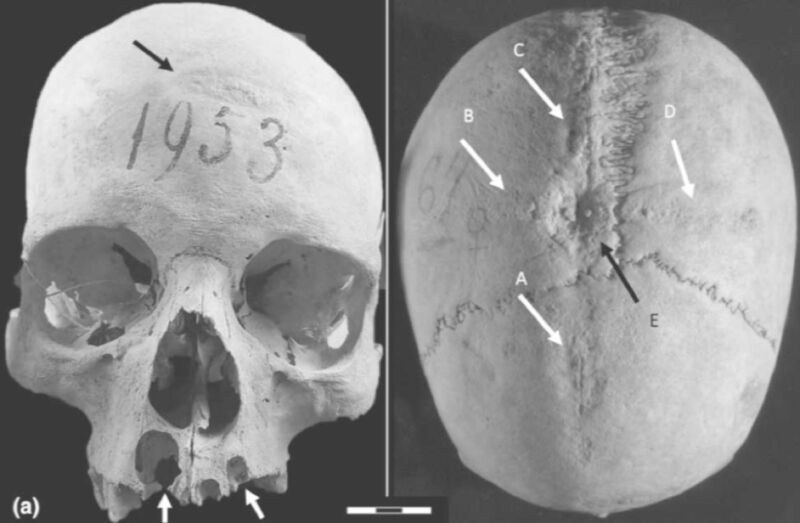Archaeologists found evidence of trepanation on medieval woman’s skull

Enlarge / This skull of a 50-year-old-ish medieval woman, circa 6th to 8th century, shows evidence of trepanation. (credit: I. Micarelli et al., 2023)
Scientists analyzed the skull of a medieval woman who once lived in central Italy and found evidence that she experienced at least two brain surgeries consistent with the practice of trepanation, according to a recent paper published in the International Journal of Osteoarchaeology. It's one of the few archaeological pieces of evidence of trepanation being performed on early medieval women yet found, although why the woman in question was subjected to such a risky invasive surgical procedure remains speculative.
Archaeologists have found evidence of various examples of primitive surgery dating back several thousand years. For instance, last year, archaeologists excavated a 5,300-year-old skull of an elderly woman (about 65 years old) from a Spanish tomb. They determined that seven cut marks near the left ear canal were strong evidence of a primitive surgical procedure to treat a middle ear infection. The team also identified a flint blade that may have been used as a cauterizing tool. By the 17th century, this was a fairly common procedure to treat acute ear infections, and skulls showing evidence of a mastoidectomy have been found in Croatia (11th century), Italy (18th and 19th centuries), and Copenhagen (19th or early 20th century).
Cranial trepanation—the drilling of a hole in the head—is perhaps the oldest known example of skull surgery and one that is still practiced today, albeit rarely. It typically involves drilling or scraping a hole into the skull to expose the dura mater, the outermost of three layers of connective tissue, called meninges, that surround and protect the brain and spinal cord. Accidentally piercing that layer could result in infection or damage to the underlying blood vessels. The practice dates back 7,000 to 10,000 years, as evidenced by cave paintings and human remains. During the Middle Ages, trepanation was performed to treat such ailments as seizures and skull fractures.
Read 11 remaining paragraphs | Comments
from Gaming & Culture – Ars Technica https://ift.tt/YN6gd2M